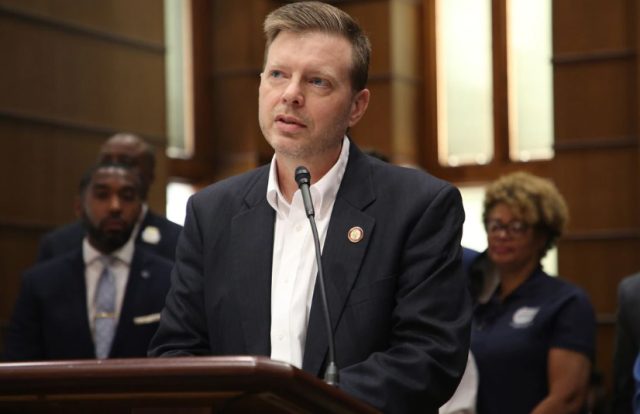By Keisa Sharpe-Jefferson
The Birmingham Times
Not only has the relationship between the City of Birmingham and Birmingham Jefferson-County Transit Authority (BJCTA) improved, but so has technology which means riders benefit, said Birmingham City Council President Darrell O’Quinn, chairman of the Council’s Transportation Committee.
“When I got to the council in 2017, I don’t know if the relationship between City Hall and BJCTA could have been any worse,” he said. “But things are vastly better now.”
Many point to the leadership of Charlotte Shaw, CEO of BJCTA. Shaw announced at this week’s Birmingham City Council the first ever State of Transit would be held Tuesday, Jan. 9 at 5:30 p.m. at the Birmingham Museum of Art for city officials.
O’Quinn said he’s “looking forward to hearing her (Shaw’s) presentation,” which she described as an opportunity learn more about BJCTA’s new services. She also announced an autonomous vehicle demonstration would be available in which members of the public can participate.
The councilor said he’s been impressed with the system’s improved technology, which is the main driver of the positive change.
“We’ve seen innovation in public transportation, with the on-demand micro-transit. We have two of those zones out there.”
Birmingham On-Demand allows citizens to book a ride within two areas of the Magic City – the City Center zone or the East Side zone. O’Quinn said the service is underutilized.
“There are still a lot of people out there who haven’t tried it (Birmingham On-Demand), but it’s one of the best transportation deals in the city of Birmingham or the metro region, where if you are in one of those two large zones, you can get a ride for $1.50. And if you’ve got additional people in your party, you pay half price for them.”
It’s been especially attractive and useful for seniors who use the service to get to places like the grocery store, medical appointments and even local eateries, he said.
And that’s not all.
“They also use it to connect to Birmingham Xpress (BX) service …. which happens to be free right now – it’s a 10-mile-long segment through the city that touches 20-plus neighborhoods and, at peak times, runs every 15 minutes.”
Both travel options have been well received by the community, he said.
“The BX line is by far the highest utilized line in the entire BJCTA fixed-route system.”
He added, “Just those two things are services that didn’t exist several years ago. They are fully functioning, and we’ve gotten great reviews on the Birmingham On-Demand system.”
Citizens aren’t the only benefactors of improved and expanded transit, O’Quinn said.
“Right now, transportation is one of the major barriers to workforce participation,” he explained. “But I think there are a lot of people in the private sector who would stand to benefit in terms of their workforce having access to a larger pool of candidates to fill positions.”
The upcoming State of Transit is an opportunity for even more forward movement, he said. “It’s a first of its kind event,” he said. “It’s going to be an opportunity to lay out plans for BJCTA moving forward. They will unveil some new initiatives.”
Since public transit doesn’t receive any monetary support from the state, O’Quinn said innovation, in addition to public-private partnerships, are crucial for transit’s future.
“We want to keep the momentum going. We have to think outside of the box and about those types of creative solutions to expand access to public transportation, and think outside of the fixed-route, 40-passenger vehicle, and get creative to provide the type of service that is convenient, reliable and affordable.”
For more on Shaw’s announcement and invitation to the State of Transit at the Birmingham City Council meeting, read here.
Updated at 1:09 p.m. on 12/14/2023 to clarify State of the Transit meeting is an invite for city officials.





